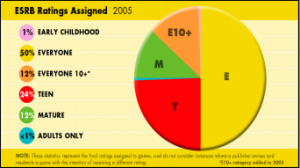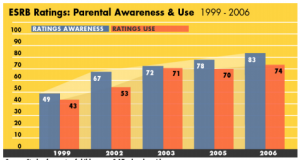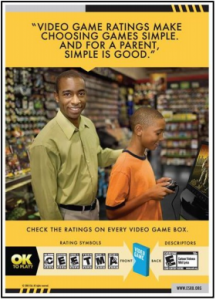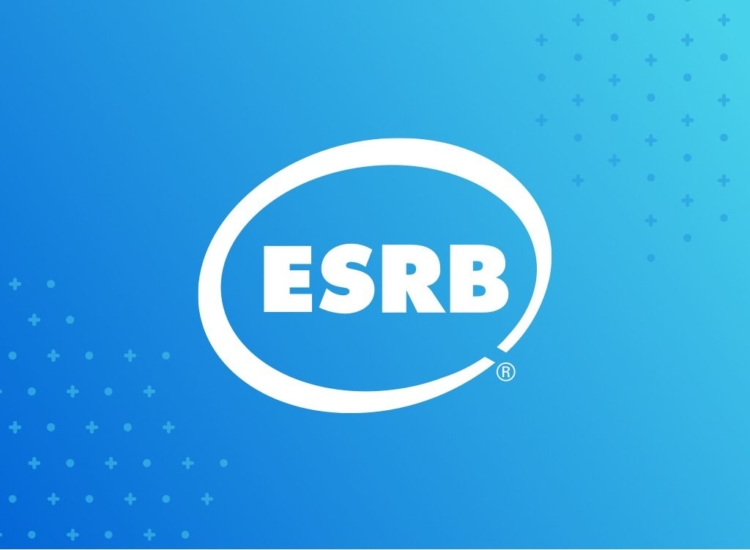Testimony of ESRB President Patricia Vance Hearing Before the U.S. House of Representatives Subcommittee on Commerce, Trade and Consumer Protection
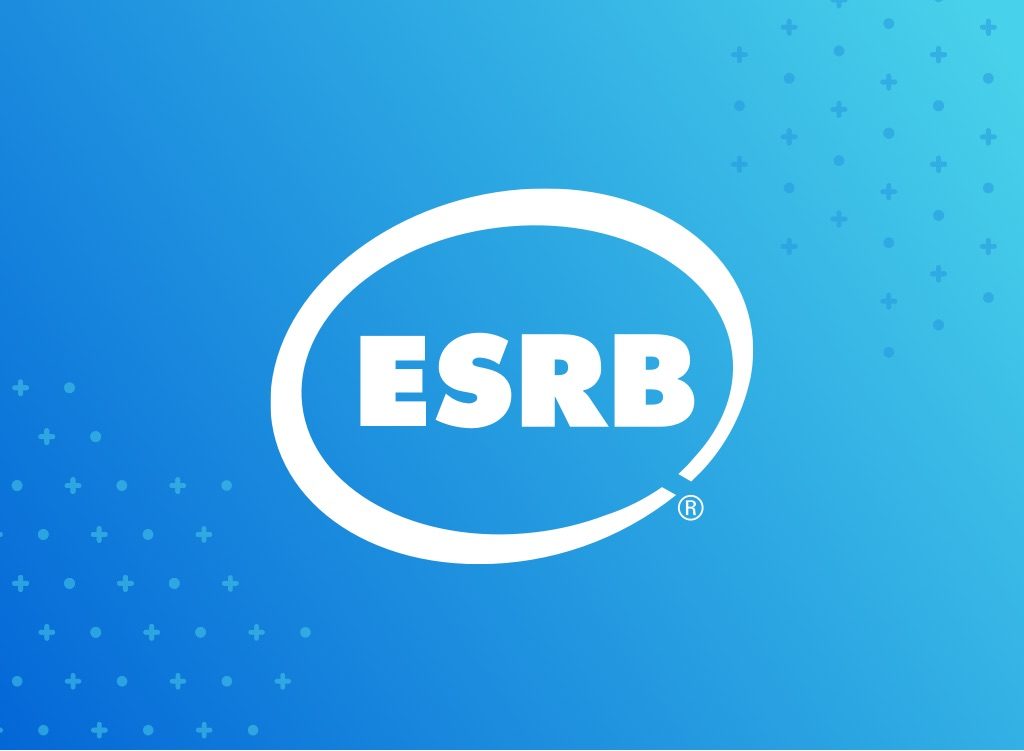
Written Testimony of Patricia E. Vance President,
Entertainment Software Rating Board (ESRB)
Hearing Before the U.S. House of Representatives Subcommittee on Commerce,
Trade and Consumer Protection
“Violent and Explicit Video Games: Informing Parents and Protecting Children”
June 14, 2006
2:00pm
Before I begin, I would like to respectfully thank Chairman Stearns for the opportunity to appear today to present an overview of the ESRB rating system. The issues being discussed in today’s hearing are critically important, especially to parents, to whom I believe our self-regulatory system offers a valuable, reliable and credible tool to make the right video game choices for their families. I ask consent that my full statement, along with instructive appendices, be made a part of the hearing record.
Background
The ESRB was created in 1994 to provide consumers, particularly parents, with the information they need to make informed computer and video game purchase decisions. The ESRB rating system was developed after consulting a wide range of child development and academic experts, analyzing other rating systems, and conducting nationwide research among parents. Through these efforts, ESRB found that what parents really wanted from a video game rating system were both age-based categories and, equally if not more importantly, objective and detailed information about what is in the game. Those surveyed agreed that a rating system should inform and suggest, not prohibit, and that the rating system should not attempt to quantify objectionable incidents, but instead should reflect the overall content and objective of the game.
Since its inception, the rating system has been periodically enhanced, revised and updated to not only ensure that we continue providing the best possible service to those who rely on the ratings, but also to keep pace with what is a rapidly evolving medium and industry. Today, we remain extremely proud of the ESRB rating system and the information it provides. We have assigned over 12,000 ratings in our history, and average over a thousand a year. Millions of parents rely on ESRB ratings to choose games they deem appropriate for their children and families, and we value greatly the trust they have placed in our ratings.
ESRB commissions independent research on an annual basis to measure parental awareness, use and agreement with the ratings. Our most recent studies found that 83% of parents with children who play video games are aware of the ratings, and 74% use them regularly when choosing games. Another study found that parents agreed with the ratings assigned or thought them “too strict” nearly 90% of the time. These findings are supported by a 2004 report by The Henry J. Kaiser Family Foundation that found that among all entertainment rating systems (TV, movies, music, and games), parents found the ESRB ratings to be the most useful, with the majority of parents surveyed finding them “very useful.” Moreover, the National PTA has called the ESRB ratings “an extremely useful and informative tool,” and urges parents to check the ratings whenever buying games.
It is important to note that according to the U.S. Federal Trade Commission, 83% of the time adults are involved in the purchase of games. It therefore stands to reason that a mission-critical ESRB activity is raising awareness and use of the rating system among parents, especially as the variety of game genres continue to expand to meet the demands of an aging game consumer. (The average age of a gamer today is over 30.)
The ESRB Rating System
Although voluntary, the rating system has been universally adopted by the game industry, and virtually all computer and video games sold in the U.S. today carry an ESRB rating. Based on the aforementioned research conducted in 1994, the ESRB rating system was created with two equally important parts:
- rating symbols, easily identifiable on the front of game packaging that suggest the most appropriate age group for each game, and
- content descriptors, found on the back, clearly stating why a game received a particular rating or indicating content that may be of interest or
Here’s an illustration of the two parts:
Rating Categories and Definitions
EARLY CHILDHOOD
Titles rated EC (Early Childhood) have content that may be suitable for ages 3 and older. Contains no material that parents would find inappropriate.
EVERYONE
Titles rated E (Everyone) have content that may be suitable for ages 6 and older. Titles in this category may contain minimal cartoon, fantasy or mild violence and/or infrequent use of mild language.
EVERYONE 10+
Titles rated E10+ (Everyone 10 and older) have content that may be suitable for ages 10 and older. Titles in this category may contain more cartoon, fantasy or mild violence, mild language, and/or minimal suggestive themes.
TEEN
Titles rated T (Teen) have content that may be suitable for ages 13 and older. Titles in this category may contain violence, suggestive themes, crude humor, minimal blood, simulated gambling and/or infrequent use of strong language.
MATURE
Titles rated M (Mature) have content that may be suitable for persons ages 17 and older. Titles in this category may contain intense violence, blood and gore, sexual content, and/or strong language.
ADULTS ONLY
Titles rated AO (Adults Only) have content that should only be played by persons 18 years and older. Titles in this category may include prolonged scenes of intense violence and/or graphic sexual content and nudity.
Content Descriptors
Over 30 different content descriptors are currently employed by the ESRB rating system. They span various categories of concern to parents, including but not limited to violence, language, suggestive or sexual content, gambling and use of controlled substances. Content descriptors provide additional information about game content that may have triggered the rating assigned or may be of interest or concern to consumers, and are assigned relative to their respective rating category.
Rating Category Breakdown
Though violent games tend to receive a disproportionately high amount of attention, the reality is that the vast majority of games rated by ESRB are appropriate for younger players. As a point of reference, of the 1,133 ratings assigned by the ESRB in 2005, 50% were rated E (Everyone), 12% were rated E10+ (Everyone ages 10 and up)1, and 24% were rated T (Teen). Games rated M (Mature) represented 12% of rating assignments, with the EC (Early Childhood) and AO (Adults Only) categories comprising the remainder.
Despite the media’s singular focus on M (Mature) rated games, the percentage of M (Mature) rating assignments did not increase in 2005. It is also important to note that in 2005 not one M (Mature) rated game made it onto the Top 10 bestseller list. That being said, with the average age of gamers increasing every year, it is reasonable to expect that the number of games targeting a more mature market will stay at least at the same level, if not increase, in the coming years. However, this reality underscores the need for parents to be educated about the tools at their disposal so they are sure to choose games that are appropriate for their children and families.
Pertinent Content
As stated above, pertinent content spans various categories including violence, profanity, sexual or suggestive content, depiction and/or use of controlled substances, gambling, etc. The following chart explains what types of content are considered pertinent from a ratings standpoint:
Game Raters
ESRB game raters are recruited from one of the most culturally diverse populations in the world – New York City. The raters are all adults and are not required to be gamers themselves; a gamer-only rating system would likely bias rating assignments as they would surely bring a different sensibility to content than the pool of raters we have always used. Our raters have no ties to the video game industry, and typically have experience with children. They are specially trained by ESRB to rate computer and video games and work independently of one another on a part-time basis, attending no more than one 2-3 hour rating session per week. The ESRB strives to recruit raters who are demographically diverse by age (must be at least 18), martial status, gender, race, education and cultural background to reflect the U.S. population overall.
Rating Process
Prior to a game being released to the public, game publishers submit a detailed written questionnaire to the ESRB, often with supplements (such as lyric sheets, scripts, etc.), specifying exactly what pertinent content will be in the final version of the game. Along with the written submission materials, publishers must provide a videotape capturing all pertinent content, incorporating the most extreme instances, across all relevant categories including but not limited to violence, language, sexual or suggestive, controlled substances and gambling. Pertinent content that is not programmed to be playable but will exist in the final game’s code base must also be disclosed.
Once the submission is checked by ESRB for completeness, which may also involve ESRB staff members playing a beta version of the game, the video footage is reviewed by at least three or more raters. Upon independently reviewing the video, the raters recommend appropriate rating categories and content descriptors for the content in each scene reviewed and the game overall. Raters consider many elements in their assignments including context, realism, frequency, the reward system, the degree of player control and overall intensity, among others.
The ESRB checks the raters’ assignments for majority consensus, conducts a parity examination where appropriate to maintain consistency and trust in the ratings, and issues an official certificate with the rating assignment to the game publisher. If consensus is not reached in the first rating session, additional sessions will be conducted until a clear majority consensus can be identified. Once issued, the publisher is then able to either accept the rating as final or revise the game’s content and resubmit the game to the ESRB, at which time the process starts anew. Publishers also have the ability to appeal an ESRB rating assignment to an Appeals Board, which is made up of publishers, retailers and other professionals.
While some suggest that ESRB should play each video game as part of the rating process (play-testing does occur on a limited basis), there are several reasons why this would be impractical. First, since ESRB ratings must appear on game packaging and in all advertising when the product is released, we oftentimes receive games that are not yet fully playable from start to finish, or “buggy,” at that point in the development process. Secondly, many games have upwards of 50 hours of gameplay, and so requiring raters to play each of the more than 1,000 games we rate each year would not only be inefficient and unnecessary considering the high degree of repetition in video games, but due to their length and complexity, would offer no greater assurance that ESRB raters would find and review all of the pertinent content.
Lastly, ESRB ratings are based on the consensus of independent raters whose values and judgment reflect those of the mainstream American public, especially parents (see Consumer Research below). Requiring all ESRB raters to be expert gamers (which they would need to be if the rating process depended on playing through every game submitted) may hinder the ESRB’s ability to recruit a diverse rater pool that is reflective of mainstream public opinion.
For all of the above reasons, ESRB legally requires publishers to disclose all pertinent content in their game, including the most extreme, no matter how hidden and difficult to find, so that raters can and do assign an accurate rating.
ESRB Enforcement System
As the game industry’s self-regulatory body, the ESRB is responsible for the enforcement of its rating system. The ESRB enforcement system has been praised by the U.S. Federal Trade Commission and several government leaders for its efficacy and comprehensiveness, setting it apart from other entertainment media rating systems in terms of its scope and severity2. Companies who do not comply with ESRB guidelines are subject to a wide range of ESRB sanctions, including fines, corrective actions, and other penalties. In fact, a complete review of the ESRB enforcement system was recently completed with the expert counsel and support of prominent attorneys Eric Holder, Jr., Partner with Covington & Burling and former U.S. Deputy Attorney General,
and Joseph diGenova, Founding Partner with diGenova & Toensing, LLP, former U.S. Attorney for the District of Columbia and special counsel for some of the most highly visible governmental inquiries in recent history. Their review resulted in a new class of violations for an “egregious” failure to disclose pertinent content, carrying a fine up to
$1,000,000, among other enhancements. A letter from both Mr. DiGenova and Mr. Holder, in which they state that the video game industry is “taking great care to protect consumers and to fulfill the responsibilities and obligations of its self-regulatory system,” is attached for the consideration of this Subcommittee.3
Ratings
Every publisher of a game rated by the ESRB is legally bound to disclose all pertinent content when submitting the game for an ESRB rating, including, as of July 2005, content that is programmed to be inaccessible and will remain “locked out” in the final code of the game.4 To ensure that all pertinent content was fully disclosed during the rating process, after a game is publicly released, ESRB testers review randomly and hand-selected final product. In the event that material that would have affected the assignment of a rating or content descriptor is found to have not been previously disclosed, the ESRB is empowered to impose corrective actions and a wide range of sanctions, including points, monetary fines up to $1 million for the most egregious offenses, and even suspension of rating services. Corrective actions can include pulling advertising until ratings information can be corrected, stickering packaging with correct ratings information, recalling the product, and other steps the publisher must take so the consumer has accurate information.
Last year, a widely publicized incident involving the game Grand Theft Auto: San Andreas showed how effective and forceful an enforcement system we have at our disposal. After ESRB confirmed that the game’s publisher, Rockstar Games, had not disclosed sexually explicit content that was “locked out” in the code of the game5 but which could be accessed if players downloaded from the Internet a modification (dubbed “Hot Coffee”) created by a hacker, ESRB swiftly announced the revocation of the game’s initial M (Mature) rating and re-rated it AO (Adults Only).6 Additionally, the publisher agreed to advise retailers to immediately cease sales of the game until all inventory in the retail channel could either be stickered with the AO rating, or existing copies could be exchanged for new versions without the locked-out content, maintaining the original M rating. Further, the publisher agreed to make available on the Internet a patch for parents to download which would make the modification inoperable on the PC version of the game. I submit that there is no other industry self-regulatory system willing or capable of imposing such swift and sweeping sanctions on its own members, which in this particular case resulted in the removal of a top-selling product from the market and a major loss of sales.
Opportunistic activists with their own agendas capitalized on the issue by casting “Hot Coffee” as evidence of a broken rating system and turning it into a political football. However, the facts make it abundantly clear that the actions taken by ESRB are strong evidence of an extremely capable self-regulatory body. In 30 days, the ESRB had thoroughly investigated a complex and unprecedented situation affecting one of the most popular video games ever released, had assessed the implications and scope of the content and its availability, changed its policies regarding disclosure requirements for locked-out content, and imposed prudent corrective actions on the publisher that effectively removed a top-selling product from the marketplace. These actions were taken with the interest of consumers and their trust in the ratings as our highest priority. Contrary to what some may say, there exists no rating system, nor could there ever, that would have discovered this content prior to the game’s release. The only course of action was to respond quickly and effectively and revise policies as necessary, which is precisely what we did.
More recently, the ESRB moved to re-rate another top-selling game, The Elder Scrolls IV: Oblivion due in part to the failure to disclose pertinent, locked-out content. The primary reason for this re-rating, however, was due to content that was discovered to be in the game that exceeded in terms of intensity and detail that which was disclosed by the co-publisher, Bethesda Softworks, during the rating process. Specifically, the game contained more extreme depictions of blood and gore than were included in the publisher’s submission, and after a prompt and thorough review the ESRB changed the rating assigned to the game from T (Teen) to M (Mature). This action required the publisher to sticker all existing, unsold merchandise, reproduce the game without the locked-out content and make a patch available online that consumers could download and install to render the locked-out code inaccessible.
Both of these instances, though rare and unfortunate, demonstrate just how agile and effective the ESRB’s enforcement system is, and how willing and able ESRB is to forcefully use it to ensure accurate and reliable ratings.
Advertising & Marketing
ESRB self-regulatory activities span advertising and marketing practices, as well. Publishers of games carrying an ESRB rating are also legally bound to follow the industry-adopted “Principles and Guidelines for Responsible Advertising Practices” along with an “Advertising Code of Conduct.” The ESRB’s Advertising Review Council (ARC) is responsible for the oversight, compliance, and enforcement of all industry-adopted advertising and marketing guidelines. Specific marketing rules codified in the “Code of Conduct” address everything from the required size of rating icons on game boxes to guidelines for cross-sells and cross-promotions. The rules also address inappropriate target marketing; M (Mature) rated products cannot be advertised in media vehicles that have a strong following among minors (i.e., TV – no higher than 35% under 17 audience composition is permitted; Print – no higher than 45% or more under 17 readership composition is permitted).
Guidelines require that game advertisements accurately reflect the nature and content of the product and assigned rating; should not glamorize or exploit the ESRB rating; should be created with a sense of responsibility towards the public; should not contain any content that is likely to cause serious or widespread offense to the average consumer; and must not specifically target consumers for whom the product is not rated as appropriate.
ARC diligently monitors compliance with its marketing guidelines, and actively enforces them, as confirmed repeatedly in the Federal Trade Commission’s periodic Report to Congress on the Marketing of Violent Entertainment to Children7.
Retailer Support
Most retailers in the U.S. voluntarily refuse to stock games that do not carry an ESRB rating. While the ESRB does not have the authority to stop the sale of M (Mature) rated games to minors, we do work closely with retailers and game centers to display information that explains to consumers how the rating system works and, where appropriate, support their store policy pertaining to the sale or rental of Mature-rated games to minors without parental consent through training materials and in-store
signage (see Partnerships below). Major retailers currently implement their own store policies requiring age verification for the sale of games rated M (Mature), and ESRB encourages and supports these efforts. According to a mystery shopper sting conducted earlier this year by the FTC, enforcement of those store policies has improved dramatically over the past couple of years, to a level that is now on par with admission to R-rated movies in theatres.
Consumer Research
In order to ensure that the ratings assigned by ESRB reflect the standards and meet the expectations of average American consumers, we conduct consumer research on an annual basis in ten different markets across the U.S. This research has consistently shown that parents overwhelmingly agree with the ratings that we apply. Peter D. Hart Research Associates, a nationally renowned independent opinion research firm, tests randomly selected video games rated during the prior 12 months with parents of children between the ages of 6 and 17. Parents are shown clips of actual game footage and then asked what rating they would apply. They are then asked to compare their own rating to the one actually assigned by the ESRB and whether they agree with it. Last year, this research found that parents agreed, or even thought our ratings were too strict, 87% of the time. Parents described the actual ratings as “about right” in 82% of all instances and “too strict” 5% of the time.
That said, ratings are only effective if they are being used, and so ESRB also commissions annual research of ratings awareness and use. In our most recent study conducted in March 2006, 83% of parents surveyed were aware of the ESRB ratings (up from 78% in 2005) and 74% use them regularly when choosing games for their families (up from 70% in 2005). Awareness of content descriptors also continues to grow, and is now at 65% (up from 61% in 2005). Fifty-three percent (53%) of parents “never” allow their children to play M-rated games and 41% “sometimes” do. Parents of kids under the age of 13 are almost twice as likely to “never” allow their children to play an M-rated game. Fully 91% of respondents indicated that they trust the ESRB ratings, saying their trust has either stayed “about the same” (76%) or increased (15%) during the past year. Other opinion polls conducted by Hart Research show that parents not only agree with specific ESRB ratings, but that 90 percent of them say the ESRB rating system provides the kind of information they need.
In fact, the number of messages received through ESRB’s Contact Us page on our website from consumers disputing a specific rating is negligible8. Between October 2003 and December 2005, ESRB received over 17,000 consumer inquiries, of which only 1% (or approximately 240) involved a complaint about a particular rating assigned by ESRB, whether because they found it too lenient or too restrictive. Among these complaints, consumers were evenly split between claiming that the rating assigned was too restrictive or too lenient. As a point of reference, approximately 585 million computer and video game units were sold in the U.S during this same period9.
Despite these convincing facts, ESRB is not without its detractors. Associate Professor Kimberly Thompson and graduate student Kevin Haninger of the Harvard School of Public Health have authored three studies to date regarding the “accuracy” of ESRB ratings. However, these studies are fundamentally flawed in many ways, the two most significant being that they are based on completely different criteria than the ESRB uses (and publicly states it uses) to assign content descriptors, and that the authors’ conclusions on how to assign content descriptors are not at all representative of public opinion10. A great example of this difference of opinion can be seen in their study of titles rated E (Everyone), in which they determined that 62% of the gameplay content in the popular video game Pac-man, rated by the ESRB as E for Everyone with no descriptors, was made up of “violent” content based on their criteria and definition. This claim is just one of many that is entirely inconsistent with mainstream public opinion.
That being said, it should be made clear that these studies never venture to say that the age ratings we assign are inappropriate; they merely claim that games should carry additional content descriptors to the ones that ESRB already assigned, based on the erroneous assumption that ESRB content descriptors are – or should be – a listing of every type of content one might expect to encounter in a game. To the contrary, our content descriptors are assigned relative to their respective rating category, and are there to provide consumers with additional information about content in a game that may have triggered the rating assigned, or may be of interest or concern when deciding whether they consider the game to be appropriate. For instance, a Mature-rated game with various descriptors for violent, sexual and language content, in which a character smokes a cigarette, may not necessarily receive a Use of Tobacco content descriptor since such content, in the context of the general gameplay and the Mature rating assignment, does not merit nearly as great a concern as other content elements.
The National Institute on Media and the Family (NIMF) has been another vocal critic of ESRB ratings. However, their claim of the ineffectiveness of ESRB ratings is not supported by their own review of games11. In fact, the game ratings issued by their group strongly support the reliability and accuracy of ESRB ratings in that they are overwhelmingly similar12. A recent review of NIMF’s own age recommendations showed remarkably consistent agreement with those assigned by ESRB. In a pluralistic society like ours, which embraces diversity among its citizens, no rating system could ever achieve 100% popular consensus. However, it is clear that ESRB ratings are well within the American mainstream, and that’s exactly where we strive to remain.
Consumer Education & Outreach
As noted earlier, a study conducted by the Federal Trade Commission in September 2000 reported that adults are involved in the purchase of games 83% of the time. The ESA has found in similar research that adults make or are involved in 92% of all game purchases. Regardless of the data source, it is clear that parents are either involved in or ultimately making the decision about what games their kids are playing an overwhelming majority of the time.
Keeping in mind the significant role parents play in making purchase decisions, the ESRB launched a multi- channel consumer marketing campaign in October 2003 featuring the slogan “Ok To Play? – Check The Ratings.” The campaign, which is primarily composed of a public service announcements (PSA pictured at right) and a retail partnership program, encourages parents to use both components of the rating system (rating symbols and content descriptors) to determine if a game is appropriate for their family.
The campaign generates over a billion consumer impressions annually. Over 20 publications have run the print PSA ads, including publications like Good Housekeeping, TV Guide, Family Circle, Oprah, Better Homes and Gardens, Ser Padres, Healthy Kids en Espanol, NY Post, Ladies’ Home Journal, Entertainment Weekly, Redbook, Parents, Working Mother, and Disney Adventures, among others. More than a dozen top game enthusiast publications support the campaign as well.
Because more than half of all games sold each year in the U.S. are sold during the holiday season, the ESRB also conducts an annual Holiday Outreach initiative that includes satellite television and radio media tours, print and radio PSAs, targeted outreach to parents through print and online outlets, and audio news releases. Last year’s campaign generated approximately 150 million impressions during the holiday season alone.
Partnerships
Retail
A critical part of our consumer awareness campaign is its unique retail partnership program. The overall goal of our retailer partnerships is to ensure that consumers are educated about and reminded to check the ratings when they are shopping for computer and video games. Rather than send posters or stand-alone brochures to stores that consumers may not notice, we have succeeded in getting signage displayed in stores representing the 18 top national retail accounts representing 90% of game sales, many of which have incorporated ratings education into their in-store display fixtures. ESRB has also provided many of these retailers with materials for sales associates to learn about the rating system, and has facilitated the training of nearly 45,000 store associates through an online training module.
National PTA
The ESRB has recently been working closely with the National PTA, whose president, Anna Weselak, called the ESRB ratings “an extremely useful and informative tool” while strongly encouraging parents to use it when choosing games for their families. ESRB is working with the NPTA to develop parent education materials that would be distributed to all state and local PTA chapters.
State and Local Governments
ESRB has established partnerships with various state and local governments, working with leaders and officials to promote and educate parents about the ratings. County Executive Andy Spano (Westchester County, NY), Assemblyman Ed Chavez (D-CA), State Attorneys General Mark Shurtleff of Utah and Thurbert Baker of Georgia, Puerto Rico Secretary of Consumer Affairs Alejandro Garcia and others have teamed up with ESRB to implement PSA campaigns, educational brochures and other projects aimed at raising awareness and use of the ratings.
Closing Statement
I hope this testimony has provided you with a clearer and broader understanding of the ESRB’s self-regulatory role and responsibilities. As a relatively new and quickly evolving medium, there are many misperceptions about video games in general, and I’m grateful to have had the opportunity to explain what we do and how we do it. We take great pride in our work and the service we provide to parents and other consumers of computer and video games. I look forward to having a constructive dialogue with members of the committee and answering any questions that you may have.
Thank you.

